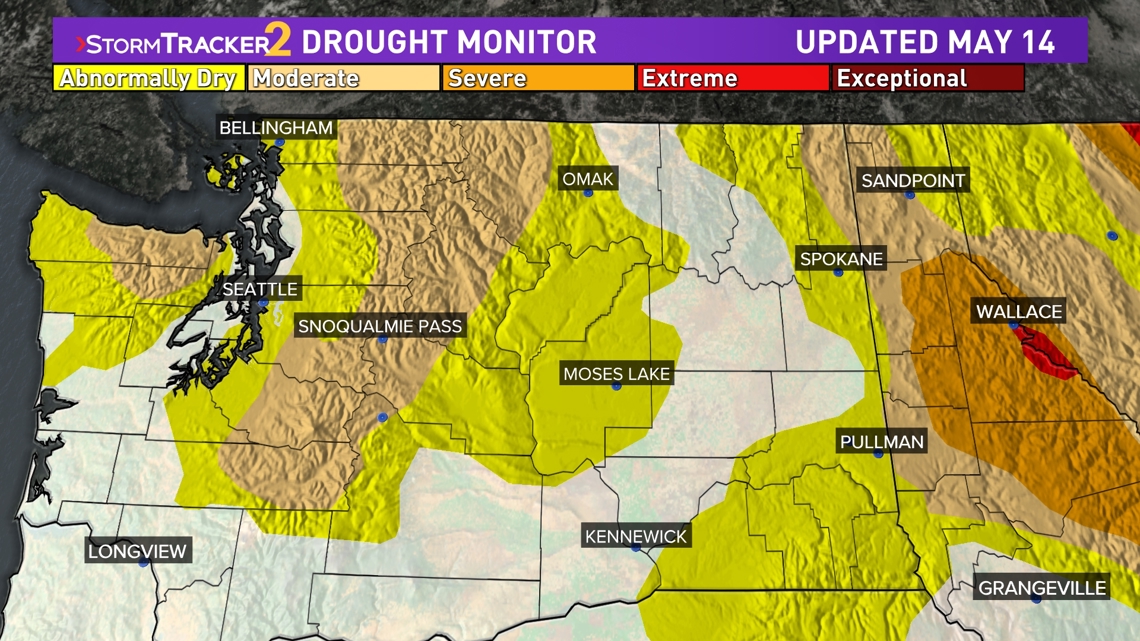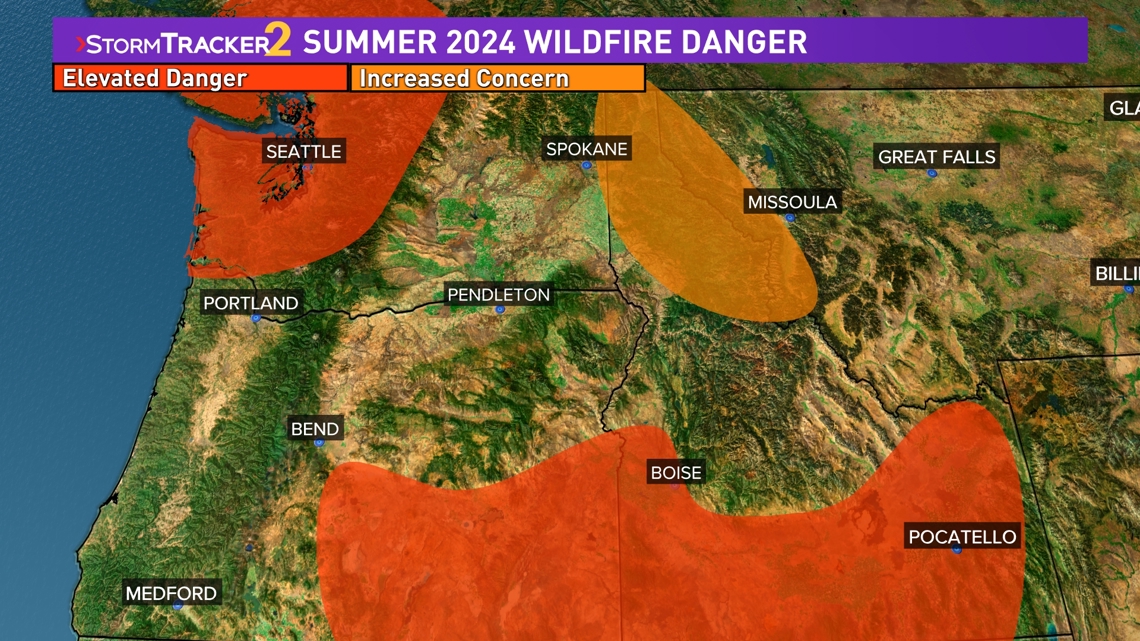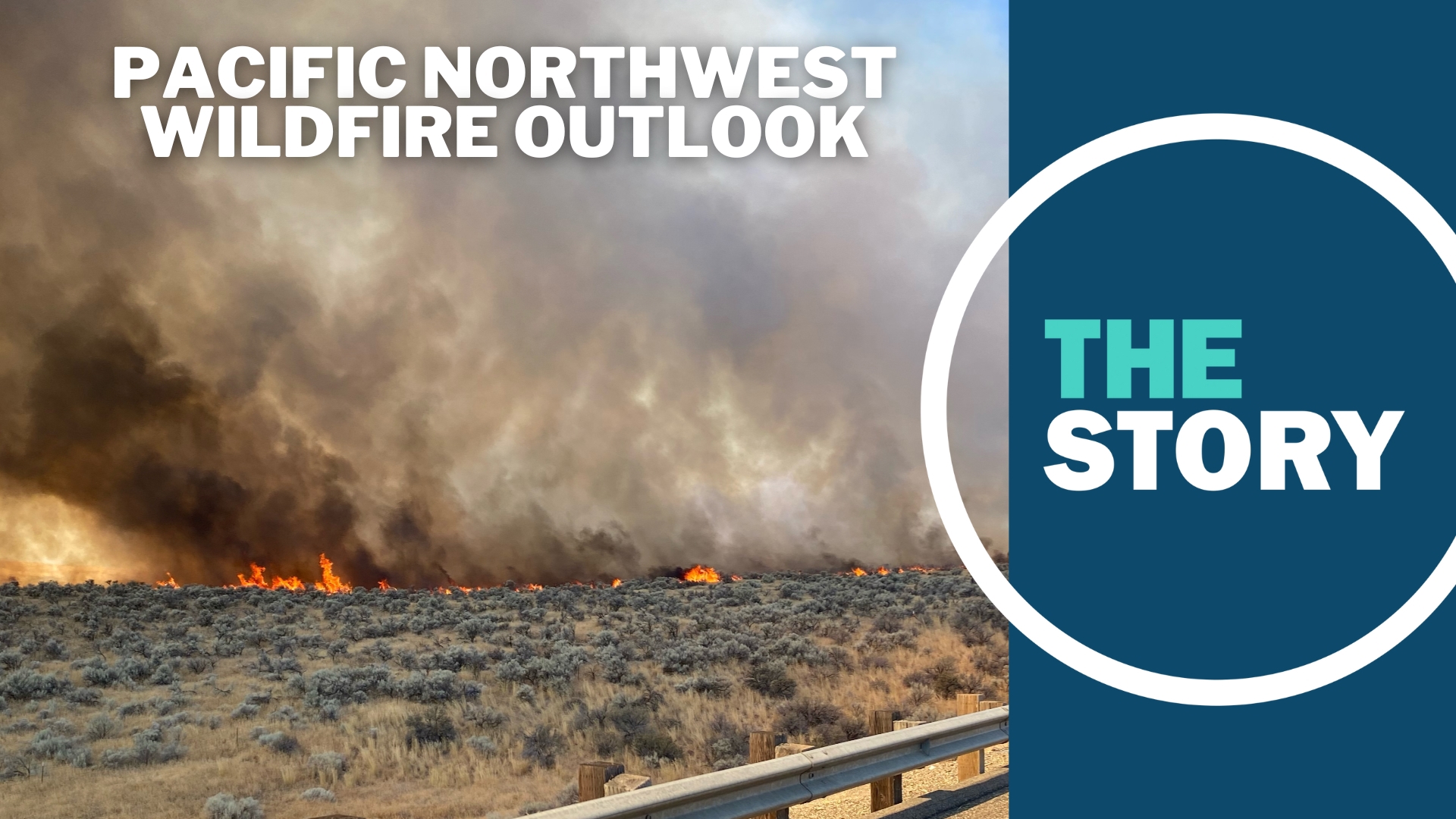SPOKANE, Wash. — Wildfire season in the Northwest is expected to be active this year. The El Niño that brought warmer temperatures and drier conditions to the region this past winter will continue through most of the summer. There are signs of La Niña conditions forming, but the cool, wet pattern likely won’t return until later this fall.
An abnormally warm dry winter in Washington and north Idaho led to a below-average snowpack in the Olympic Mountains, North Cascades, and the Northern Rockies. On the heels of a dry summer, many of the northern mountains face drought or abnormally dry conditions. Big trees or forests take multiple seasons to dry out and just as long to regain moisture.


The lower-than-average snowpack doesn’t give trees the moisture they need to make it through the dry months of summer. Decreased groundwater and mountain runoff make matters even worse. The forests lose some of their natural wildfire defense without the needed moisture. For that reason, the northern forests will be more susceptible to wildfires this summer.
In Southern Idaho and Eastern Oregon, it’s a different story. An abundance of moisture in winter and spring is great news for the big timber. However, the early-season moisture allows the fine fuels to flourish. Fine fuels include grasses and small plants that grow quickly and dry out rapidly. With a hot, dry summer forecast for the region, those grasses will likely dry out later this summer.
Once the fine fuels dry out, they have the potential to ignite easily and burn quickly. Dry grass is often responsible for the most acres burned yearly in the Northwest. In Oregon and southern Idaho, there is plenty ready to burn.


Most wildfires in the Northwest are human-caused. In an El Niño year, there are typically fewer storms and less lightning. So, almost all wildfires this year will be caused by people. Stopping wildfires really comes down to precaution on high fire danger days.
An entire wildfire season can change in just one day. Something we saw in Malden, Wash. in 2020 and during the Oregon Road and Gray fires in eastern Washington just last year. Critical fire danger days are hot, dry, and windy. Most major fires start and spread on those days. Exercising extreme caution on extremely dangerous days can make all the difference regarding the devastating fires and the smoke they create.



